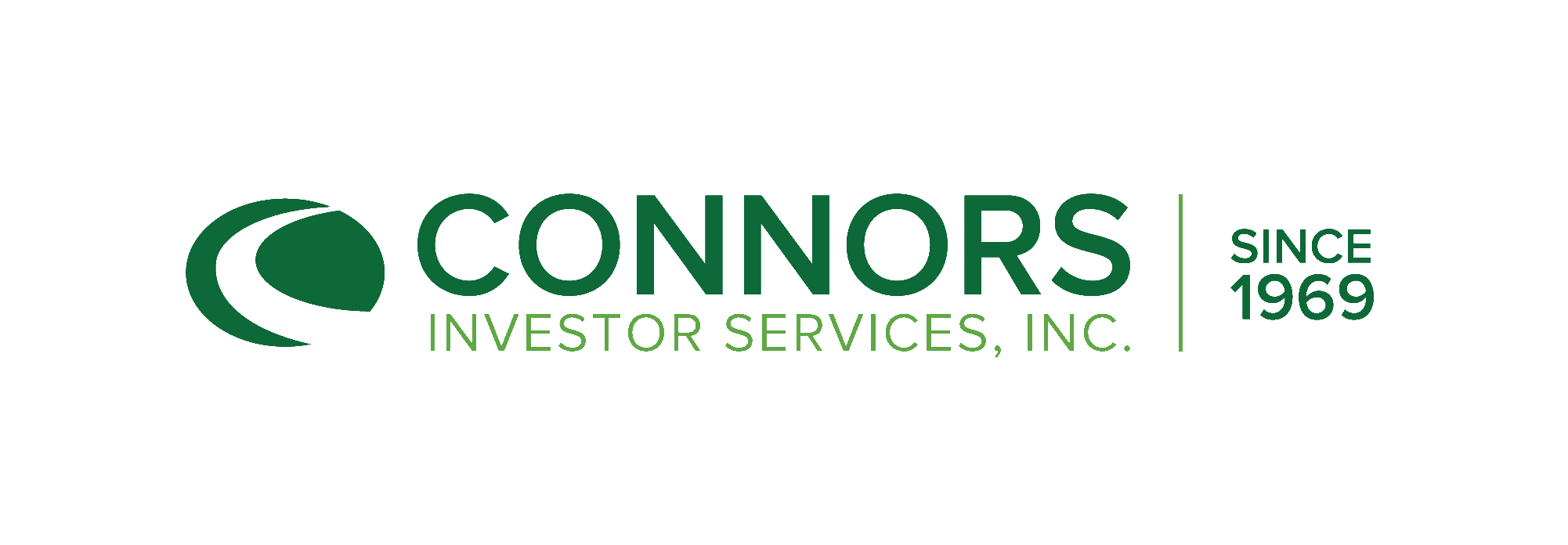2025 Q3 Connors Hedged Equity Fund (CVRDX) Quarterly Commentary
by Robert Cagliola, CFA and Robert Hahn, CFA, on Nov 12, 2025 3:46:14 PM
Market Commentary
Because It’s There
In 1923, when asked why he was attempting to reach the summit of Mount Everest, well-renowned mountain climber George Mallory replied, “Because It’s There.” This equally applies to the stock market, which continues to climb the proverbial wall of worry as the S&P 500® gained 7.8% in Q3. The market rally continued despite a myriad of worries, including ongoing tariff concerns, geopolitical turmoil in Europe and the Middle East, stubborn inflation, and a weakening labor market. On the trade front, while there were some trade deals, including the EU and Japan, which announced deals leading up to the July 9 expiration of the 90-day pause, other countries, such as India and Brazil, were hit with substantial tariffs. The pause on tariffs on China was extended an additional 90 days until November 10th. Inflation, meanwhile, remains elevated, though tariff impact has been lower than originally anticipated. The big driver in Q3 was the Fed’s shift towards a more dovish stance as the labor market continued to show signs of weakening. The market began to discount potential rate cuts leading up to the September Federal Reserve meeting, which led to outperformance from high beta and more speculative stocks. Small-cap stocks had a particularly strong quarter, up 12% for the quarter as measured by the Russell 2000® Index. Artificial Intelligence (AI) spending continues to benefit technology stocks, including the Magnificent 7, which continued to outperform. However, there was divergence between stocks as Tesla (+40% increase in the third quarter, 1% weight in the portfolio) and NVDA (+18%, 4.2%), which had strong gains while META (-0.5%, 3.2%) and AMZN (0.1%, 4.0%) were laggards.
While AI continues to drive the markets, the big news during the third quarter was the Fed’s pivot from a neutral to a more dovish stance with regard to its Fed funds rate. Lower rates, along with accelerated depreciation, in our opinion, should be tailwinds to not only datacenter spending but also spending on the associated infrastructure buildout, including electrical generation and transmission needed to power the data centers. The demand for associated industrial products is causing companies in the sector to expand production to better meet demand, as lead times for key equipment, such as natural gas turbines, have extended out to as much as 3-4 years. Given that power has become the limiting factor, data center providers have become creative in ensuring they will have the requisite power they need by building the data centers where electrical power can be added more quickly, according to the U.S. Department of Energy. Often, these locations are in the middle of the country rather than on the coasts where they were historically located. While there may be pullbacks in the stocks of AI-related companies leading the datacenter buildout, we believe that bottlenecks in areas such as power and healthy investor skepticism will enable the AI rollout to continue. That said, we believe that monetization of AI is needed for further stock appreciation. We note that much of the spending up until now has been led by hyperscaler spending on the development and training of Large Language Models (LLMs). The next phase, as recently discussed by OpenAI and Nvidia, will be led by inference, where companies in all industries leverage LLMs to drive incremental revenue growth, reduce costs, and increase worker productivity.
Following a 0.6% contraction in GDP in Q1, economic growth surprised to the upside in Q2, rebounding to 3.8%. Economic growth is expected to continue in Q3, with the Atlanta Fed’s GDPNow estimating 3.8% growth for the quarter. Despite strong economic growth, the employment market continued to show signs of weakening, with a lower-than-expected 22,000 jobs added in August, and for the first time in four years, there was a decline of 13,000 positions in June. The unemployment rate, while low on an absolute basis, increased to 4.3%. Inflation also ticked higher in August, with the CPI rising to 2.9%. Despite the pickup in inflation, the Fed cut rates by 25 basis points at its September meeting, given the weakening labor market, with an additional two cuts expected before year-end, as projected in the Federal Open Market Committee's dot plot. In terms of sectors, the Market continues to be led by Technology (13%) and Communication Services (11.8%). The Consumer Discretionary sector (9.4%) also performed well as the market began to price in rate cuts, and consumer spending remains resilient, particularly at the high end. The worst performing sectors were Consumer Staples (-2.9%), Real Estate (1.7%), and Materials (2.6%). While we could see a minor pullback following two strong quarters in a row, the market could see further upside before year-end if spending, led by AI investments, leads to market broadening into other sectors that are enabling the data center and power grid buildout.
Performance Attribution
Our top three contributors to performance for the quarter were as follows:
Alphabet Inc. (GOOGL, 3.7% weight in the portfolio) reported a strong quarter, driven by significant growth in AI enhancements, resulting in solid performance across Search, YouTube, and Cloud services. The Search service saw double-digit revenue growth, while YouTube and Cloud services continued to expand, with Cloud’s annual revenue run rate surpassing $50 billion. Google Cloud’s operating margin notably increased, and subscription revenues, particularly from YouTube, grew by 20%.
Tapestry (TPR, 2.3%) reported a record fiscal year with $7 billion in revenue and a 20% operating margin, driven by strong growth across its brands, particularly Coach, which saw its strongest fiscal year in history. Tapestry is taking action to mitigate much of the impact from tariffs, which will have some influence on profitability in the current year. Impacts will be limited through supply chain optimization and efficiency improvements in fiscal 2026. The company expects revenue of $7.2 billion, with increasing operating margins serving as a buffer against declining gross margins due to tariffs, demonstrating financial agility and a commitment to maintaining growth.
Oracle (ORCL, 2.2%) showed significant growth driven by its cloud services and AI workloads, with a 359% year-over-year increase in remaining performance obligations to $455 billion, indicating strong future revenue potential. Total cloud revenue grew by 27%, supported by a 500% increase in cloud RPO. Oracle also revised its cloud infrastructure growth forecast upwards, expecting it to grow 77% this fiscal year. Additionally, Oracle’s focus on AI and multi-cloud databases has resulted in significant revenue growth as well.
Holdings within the portfolio that were negative contributors to performance were as follows:
Chipotle (CMG, 0.8%) reported sales growth of 3% with digital sales making up 35.5% of total sales, indicating a strong digital presence but also highlighting challenges in driving in-store traffic. Therefore, the company faced a decline in restaurant-level margin by 150 basis points and a 3% decline in adjusted EPS, reflecting increased costs and pressure on profitability. The company adjusted its full-year comparable sales projection to be about flat, due to volatility in consumer trends. The position was sold in late August with proceeds reinvested in opportunities showing more consistent and sustainable execution.
Salesforce (CRM, 1.7%) reported strong revenue growth of 10% year-over-year, driven by a 26% increase in net new bookings from deals over $1 million. The AI and Data Cloud product line saw a 120% year-over-year increase, with Data Cloud reaching $7 billion in revenues. The company also announced the rapid adoption of Agentforce, with 40% of new bookings this quarter coming from existing customers. However, the stock price performed poorly in the quarter due to concerns about the defensibility of SaaS against AI disruptions and the per-seat pricing model. Investor concerns center around the misalignment of cost structure vs revenue model, in which AI workloads have variable and sizable inference/compute costs that scale with usage, while charging a flat seat fee doesn’t capture that variability and can lead to margin pressure.
Tyler Technologies (TYL, 1.1%) reported double-digit revenue growth, a surge in SaaS revenues by 21.5% accompanied by a significant increase in free cash flow. The company also highlighted its AI strategy with new AI features for multiple products expected by year-end. The strong numbers and outlook were not enough to overcome investor concerns about the interplay between AI disruptions and SaaS offerings, very similar to investor concerns pertaining to Salesforce, as explained above. However, the company reiterated that SaaS growth was firm with a positive outlook on customer retention and expansion efforts.
Activity During the Quarter
As discussed above, a pillar supporting the market and driving consistent returns is the AI capital spend. The tentacles of AI buildout reach across multiple sectors, but are specific within each. As such, we purchased Caterpillar (CAT, 2% in the portfolio) early in the quarter for its exposure to both the construction industry and power generation segment, which surged by 19%, primarily driven by demand for mini-turbines for data center applications. In addition, we purchased a light position in Tesla (TSLA, 1%) as we believe an inflection in technology and application related to Full Self-Driving (FSD) vehicles, Robotaxi, and long-term growth opportunities within its AI and Robotics application is trending toward realization. Other notable purchases included Netflix (NFLX, 1.4%) and Nike (NKE, 1%), to gain exposure to AI-enhancing tools in personalization and advertising in the case of NFLX, and to have a presence in the slow but building turnaround story of NKE. Proceeds for the purchases were funded by sales in United Health (UNH, 1.1%), Proctor and Gamble (PG, 1%), Dover (DOV, 1.7%), Chipotle (CMG, .8%), and NextEra (NEE, 1.7%). UNH was sold, given the revised 2025 outlook due to the company’s underestimation in Medicare Advantage medical cost trends. The other names were sold due to projected difficulties with sustaining margin levels while pushing out expected eps acceleration.
Call Option Premium
Market volatility (VIX Index) remained remarkably subdued in the quarter as equities continued to recover from the tariff-tantrum sell-off in April. Volatility traded below 20 for the entirety of the quarter except for a brief spike related to the underwhelming Jobs Report released by the Bureau of Labor Statistics on August 1st, from which markets quickly recovered as the case for rate cuts became more prominent. In this environment, premium generation remained solid, as individual equity implied volatilities consistently remained higher relative to the volatility at the S&P 500® Index level. Opportunities to roll in-the-money options were presented at various points in the quarter, from which strikes were moved out on the calendar and up in strike price. This process enables the portfolio to maintain original cost basis in the stock, thereby minimizing tax impact, while also allowing for upside participation in an upward-trending market. Each call option position is evaluated as to its roll qualification based on our analysis of the underlying stock potential for positive price movement, as well as option premium potential based on implied volatilities and delta. Premium generation on a net basis (net of premium paid on the buy-back) was 1% simple and 3.8% annualized, while the average days-to-maturity of the call option at initiation was 86 days, with 11% upside to the strike prices (representing the difference between the current price of the stock and the strike price). The portfolio was roughly 54% covered on average for the quarter.
Protective Put Positioning
The notional value of put contracts ranged from 15% to 60% of total portfolio value, ending the quarter at roughly 42%. Positioning in put contracts consisted of spreads to cheapen the overall cost of protection versus entering into long-only contracts. Contracts were monetized during the brief pullback in early August, but essentially were a drag to overall portfolio performance given the persistent uptrend in market movement. Tactically, protective put spreads were lightly added during market surges and as technicals displayed overbought readings. The overall drag to performance from the puts was -0.76%.
Outlook
The market rally continued for a second consecutive strong quarter despite a litany of concerns, including tariffs, geopolitical concerns, stubborn inflation, and a weakening employment market as the AI buildout continues to drive economic growth with many of the associated benefits from higher productivity, lower costs, and incremental revenue still to come. While undoubtedly, we could experience a pullback after substantial gains off of April lows, there are multiple drivers for further market upside in the fourth quarter, including a potential broadening of the market from higher economic growth and Fed rate cuts. We continue to maintain a diversified portfolio with both growth and value stocks and look to add additional exposure to cyclical stocks that could benefit from pro-growth policies and Fed rate cuts. We remain disciplined and continue to use sharp spikes in stocks to take profits in holdings that appear extended in the near-term and add to positions of undervalued equities to enhance the risk/reward profile of the overall portfolio.
|
The performance data quoted represents past performance. Past performance does not guarantee future results. The investment return and principal value of an investment will fluctuate so that an investor’s shares, when redeemed, may be worth more or less than their original cost. Current performance may be lower or higher than the performance data quoted. For performance current to the most recent month end, please call 833-601-2676. |
IMPORTANT INFORMATION:
Past performance is no guarantee of future results. As with any mutual fund investment, there is a risk that you could lose money by investing in the Fund. The Connors Hedged Equity Fund is distributed by Ultimus Fund Distributors, LLC. (Member FINRA) Connors Investor Services and Ultimus Fund Distributors, LLC are separate and unaffiliated.
This information is for use with concurrent or prior delivery of a fund prospectus. Investors should consider the investment objective, risks, charges, and expenses of the Fund(s) before investing. The prospectus and the summary prospectus contain this and other information about the Fund and should be read carefully before investing. The prospectus may be obtained by calling 844-ACFUNDS (844-223-8637).
This material is being provided for informational purposes only. Any information should not be deemed a recommendation to buy, hold or sell any security. Certain information has been obtained from third-party sources we consider reliable, but we do not guarantee that such information is accurate or complete. This report is not a complete description of the securities, markets, or developments referred to in this material and does not include all available data necessary for making an investment decision. Prior to making an investment decision, please consult with your financial advisor about your individual situation. Investing involves risk and you may incur a profit or loss regardless of strategy selected. There is no guarantee that the statements, opinions, or forecasts provided herein will prove to be correct. Opinions are subject to change without notice.
Definitions:
Investments in options involve risks different from, or possibly greater than, the risks associated with investing directly in the underlying securities.
Delta: The amount option is expected to move for $1 change in stock price.
Call option: A call option is a financial contract that gives the buyer the right, but not the obligation, to purchase a specific asset at a predetermined price within a specific time period.
Covered call: Selling a call option on an underlying long-held security.
Notional: In derivatives markets, such as futures and options, the notional value is the value of the underlying asset that the contract is based on.
Out of the money: Out of the money refers to a call option with a strike price that is higher than the market price of the underlying asset, or a put option with a strike price that is lower than the market price of the underlying asset.
Portfolio percentage written: Refers to the number of call contracts written (or sold) versus the number of shares held in the portfolio. One contract is equivalent to 100 shares.
Put contract: Refers to a contract that gives the holder the right, but not the obligation, to sell an underlying asset. In this case the underlying asset is the S&P 500 Index.
Put protection: Implementing a protective put by purchasing a put option vs a long underlying equity position or broad index that is not necessarily held.
Rolling in the money (ITM) call option: A trading strategy that involves closing an existing ITM call option and opening a new one. The new option has a different expiration date or strike price
S&P 500® Index: A market capitalization-weighted index of 500 widely held stocks often used as a proxy for the stock market. Unlike mutual funds, the index does not incur expenses. If expenses were deducted, the actual returns of this index would be lower.
Strike Price: The predetermined price at which a specific security may be purchased (for a call option) or sold (for a put option) by the option holder until the expiration date of the options contract.
Total Income generation: The income generated through the sale of the call option contracts which generates cash and is counted as income for the portfolio.
VIX Index: The ticker symbol and the popular name for the Chicago Board Options Exchange's CBOE Volatility Index, a popular measure of the stock market's expectation of volatility based on S&P 500 index options.
Volatility: A statistical measure of dispersion of returns.





